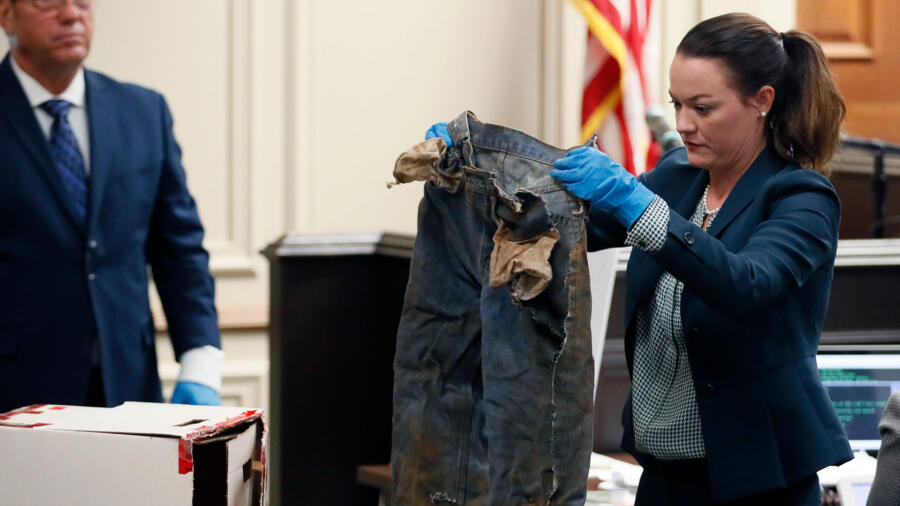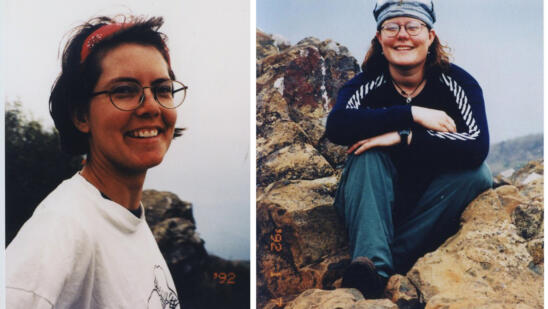Warning: The following contains disturbing descriptions of racially motivated violence. Reader discretion is advised.
Timothy Coggins, a Black man from Griffin, Georgia, was found murdered on October 9, 1983. His body was left under a giant oak, known locally as “the Hanging Tree.” He’d been dragged behind a vehicle and then stabbed. “X” marks were carved into his torso to represent a Confederate flag.
Coggins, 23, spent his last night at the People’s Choice bar in his hometown. Clubgoers said some white men had come looking for him, and he’d followed them outside. Two days later, police sought the community’s help ID’ing the badly mutilated body. An investigation lasted two weeks. It bore no fruit.
Thirty-four years later, an agent for the Georgia Bureau of Investigations (GBI) was assigned the cold case file. Jared Coleman used the thin notes to suss out a suspect—one briefly eyed when Tim was first found. This time, arrests came swiftly: Frank Gebhardt, a mill worker, would face charges in the race killing. So would William Moore Sr., one of Gebhardt’s in-laws.
Marie G. Broder, an assistant district attorney, led the prosecution. In June 2018, Gebhardt was convicted of murder and sentenced to life, plus 30 years. Soon after, Moore took a plea that came with a 20-year sentence. Broder, now D.A. for the Griffin Judicial Circuit, spoke with A&E True Crime about how Coggins’ killers set the stage for their own downfall.
You’ve said Timothy Coggins was slain ‘because he was not following the rules of 1983’ in Griffin. What were those rules?
Back in 1983, you didn’t go to certain parts of Griffin if you were a Black man, and you especially didn’t have a friendship with someone who was also in a semi-type of relationship with Frankie Gebhardt.
Our theory was that Timothy Coggins was seen dancing with Ruth Guy, who at the time was in a loose relationship with Frankie Gebhardt. From what we heard, it was definitely a sexual relationship—Frankie would call her his ‘old lady’—but they weren’t in a ‘formal’ relationship. It would have enraged someone so racist simply to see Timothy Coggins flirting with the same woman that he was in any type of relationship with. And it did. We had that, and that’s the motive we went with.
[Stream the Cold Case Files episode about the Coggins case in the A&E App.]
Evidence from the crime scene went missing over the years, including a wooden club possibly used to beat Coggins. How big a problem was that in building your case?
The biggest hurdles were the age of the case and the lack of physical evidence. I’ve tried cold cases before, but never one that began before I was born. So that was a challenge. And yes, we had hardly any physical evidence from the original file. I have my suspicions as to why.
[Editor’s note: In a 2020 interview with ABC News, Spalding County Sheriff Darrell Dix said that in 2016, as he and members of his department were looking for evidence from Coggins’ murder, they realized some had gone missing. They also came across a notebook from a former sheriff’s deputy who claims he infiltrated the KKK and learned the group had also infiltrated police departments.]
So it’s 34 years later, and you need something tangible. Gebhardt had told people he disposed of evidence in a well on his property. You arranged to have the well flushed. What was that like to watch?
I was sick that entire morning, just with nerves… Keep in mind that we can’t see what’s being pulled up. It’s all coming up this tube, and going into this big truck… I felt hopeful when they started to hit trash. We could see trash around the edges of the tube that was going down there, and it was burned. At that moment, in my heart, I knew we were going to find something, because that’s what Gebhardt had told people—he’d thrown everything down there, and then for years thrown burned trash on top of it, thinking that was going to get rid of it.
There were sneakers, like the ones Tim wore, a T-shirt, with slash wounds and a knife. But the knife didn’t produce any DNA, right?
That’s correct. None of it did. We knew going in that if we used water to flush the well, that any DNA that might be on anything would be gone. But the reality is that we also knew that this evidence had been sitting in a well with water for 34 years, so the likelihood of there being DNA on anything was, basically, none.
Now that it’s been a few years since the trial, what stands out in hindsight about that experience?
I felt so much pressure to hear that guilty verdict for Timothy. It weighs on you. And that’s when you lose 12 pounds that you really didn’t need to lose, and your hair is falling out and you’re not sleeping.
I did opening arguments, and I don’t often brag on myself, but I will say that I think it was the best one that I’ve ever done… I said, ‘When you’re looking at a murder, you start with the crime scene and you let the crime scene speak to you. Sometimes, things will whisper as to what happened. And then there are other crime scenes that will scream at you about what happened. And this crime scene screamed at you about the horrible things that happened to this man on this killing field.’
You called witnesses who testified that Gebhardt had talked about killing Tim, including a convicted child molester, a meth addict and a white supremacist. How did that play?
The jury thought the physical evidence corroborated the statements that they heard from the witnesses. And they definitely took into consideration that so many people had heard Gebhardt’s story. Frankie was not ashamed at all of what he did. To quote [GBI agent] Jared Coleman: ‘He wore it as a badge of honor.’
You and your family live in Griffin. What’s it like there today?
I would like to sit here and tell you that it’s a lot better. There’s definitely still some segregation, especially with housing. The schools, of course, are integrated. I think government is becoming more representative of the population of Griffin, and that makes me very proud. There’s always room for growth in that area. It’s just a little slow.
Tim’s family didn’t put a headstone on his grave until the arrests were made, because they thought his killers might desecrate it. I’m struck that the family held their ground in Griffin as all that time passed.
They stayed because they feel very tied to Griffin. [Tim’s niece] Heather has a restaurant now that’s fantastic… I think they all want to make Griffin better. They weren’t pushed out.
Related Features:
Who Were Timothy Krajcir’s Victims?
What Are Some of the Oldest Cold Cases That Have Recently Been Cracked Open?


